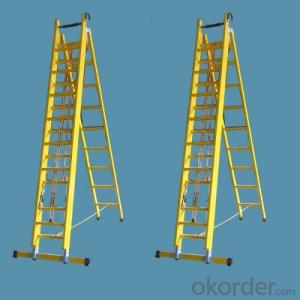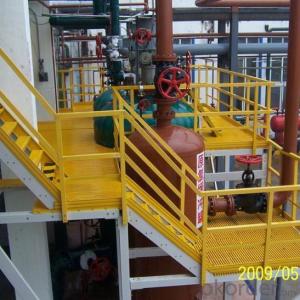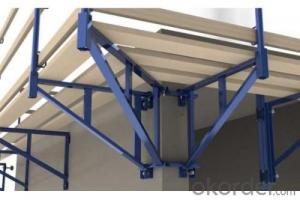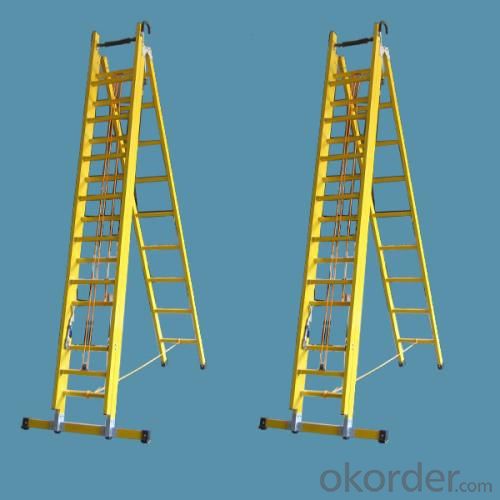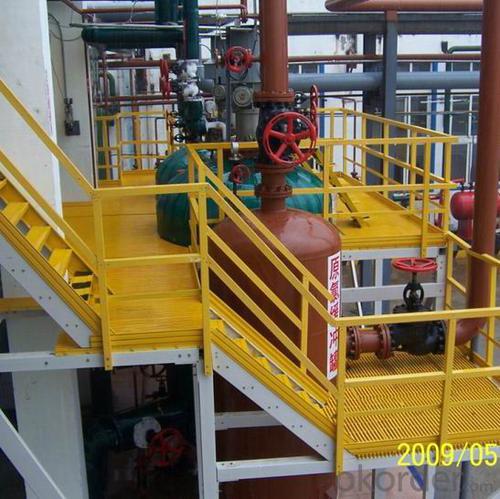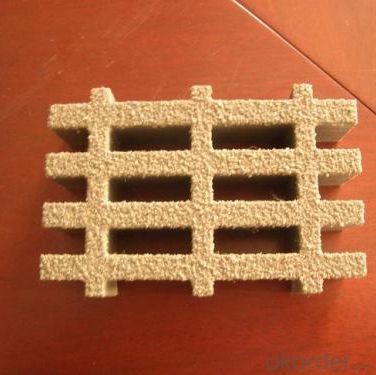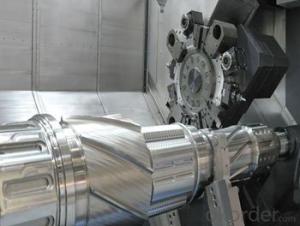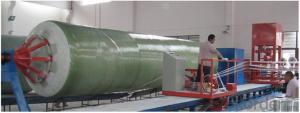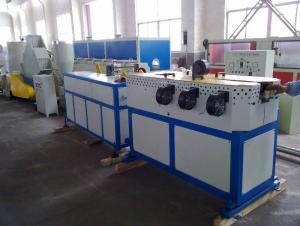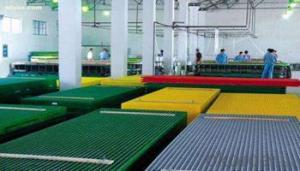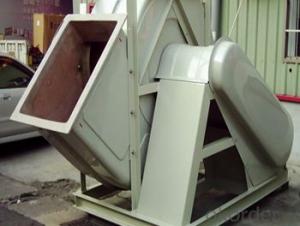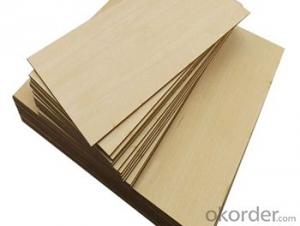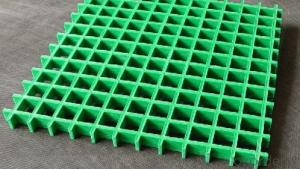FRP Pultrusion Profiles - Anti-Flammable FRP Pultruded Grating On Sale
- Loading Port:
- Tianjin
- Payment Terms:
- TT OR LC
- Min Order Qty:
- 20000 watt
- Supply Capability:
- 100000 watt/month
OKorder Service Pledge
OKorder Financial Service
You Might Also Like
Specification
PRODUCT DESCRIPTION
Pultruded grating is made by a particular assembly process, which using “I” shape as its main load-bearing and special rod to go through the bearing bar. Pultruded grating include the standard grating and the custom grating, the custom grating can be designed to meet customer’s requirement or special using condition by changing the shape, size and space of the bearing bars, the surface can be covered with lozenge panel, grit panel, or added the anti-slippery sand directly.
FRP pultruded grating has the most characteristics of molded grating, but it has its distinct advantages, it has very high fiberglass content in the loading direction, so it has very high load capability, it has more superiority when used at wide span, so that the basic support will be decreased and the project cost will be reduced accordingly.
SPECIFICATION
The standard space between two crossbars is 6 inch or 12 inch.
Thickness (mm) | Bar width (mm) | Open space (mm) | Open rate (%) | Approx weight (kg/m |
25.4 | 15.2 | 22.8 | 60 | 13.2 |
25.4 | 15.2 | 15.2 | 50 | 15.9 |
25.4 | 15.2 | 10.1 | 40 | 18.5 |
25.4 | 40 | 10.8 | 21 | 14.5 |
38.1 | 15.2 | 22.8 | 60 | 15.8 |
38.1 | 15.2 | 15.2 | 50 | 19.1 |
38.1 | 15.2 | 10.1 | 40 | 22.4 |
50.8 | 25.4 | 25.4 | 50 | 16.6 |
50.8 | 25.4 | 12.7 | 33 | 21.1 |
CHOICE FOR PULTRUDED GRATING
Resin: GP resin, ISO resin, VE resin, Phenol resin
Color choice: Yellow, gray, green, custom color
Surface choice: Groove surface, grit surface, lozenge cover surface
FEATURES
a. Anti-corrosion and anti-rust
b. Light weight and high strength
c. Anti-flammable
d. Anti- fatigue
e. Safe and anti-slippery
f. Anti-ageing
g. Easy of maintenance
h. Good economic benefit
FIELDS SERVED
Sewage treatment,
water supply and drainage,
chemical industry,
oil industry,
power engineering,
pulp and paper,
construction engineering,
spinning, marine engineering.
APPLICATION
Operation terrace,
stair walkway,
ground floor,
trench cover,
sidewalk,
foot bridge,
equipment safety fence,
scaffold.
COMPANT DESCRIPTION
CNBM,China National Building Materials Group is a state-owned enterprise in charge of administrative affairs in china building materials industry. Established in 1984, CNBM is a large group corporation of building materials with total assets of 25 billion RMB and a total staff of 30,000.CNBM now owns 200 subordinating firms of solely owned and joint-venture companies.
CNBM International Corporation is one subsidiary of CNBM, we focus on offering good-quality products,professional service and complete solution to our customers. Strong delivery capacity, advanced technology& management, strong financing capability and excellent after-sale service are our advantages in sharing international market.
FAQ
1.Q:Are you factory or trading company ?
A:We are Factory produce FRP machines and FRP products.
2.Q:If can customized by customers requirements?
A:yes,we can produce the machine with customized size.
3.Q:How about the payment?
A:We accept any kind of payment.
4.Q:What is the guarantee?
A:Gurantee is one year.
5.Q:If you can training?
A:yes ,we can training in our factory also can send engineers to your factory training.
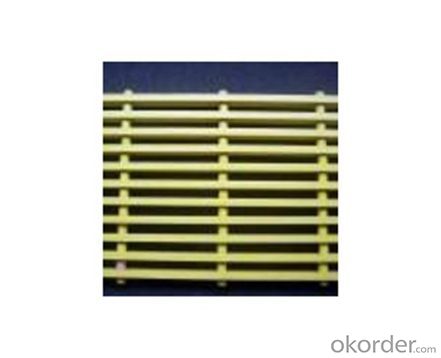
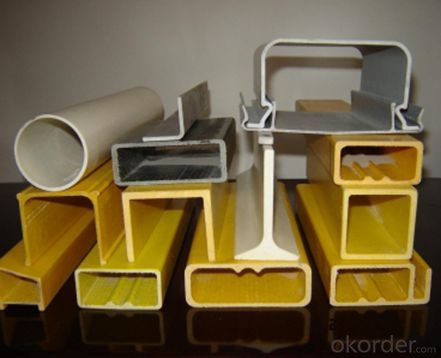

- Q: What are the characteristics of FRP products?
- Good electrical performanceIt is a good insulating material used for making insulators. High dielectric protection can be maintained at high frequencies. Microwave permeability is good, and has been widely used in radome.
- Q: What are the different shapes and sizes of FRP pultrusion profiles available?
- FRP (Fiber Reinforced Polymer) pultrusion profiles are available in a wide range of shapes and sizes to cater to various applications and industries. Some of the commonly available shapes include: 1. Square and rectangular profiles: These profiles are available in different sizes and are widely used in construction, infrastructure, and industrial applications. They offer excellent structural strength and can be used as beams, columns, or other load-bearing elements. 2. Round profiles: Round FRP pultrusion profiles are often used as structural supports, handrails, and guardrails. They are available in various diameters to suit different requirements. 3. I-beams: FRP I-beams are popular in the construction industry due to their high strength-to-weight ratio. They are often used as structural members, supporting elements, or floor joists. 4. Channel profiles: Channel-shaped FRP profiles are used for applications that require a combination of strength and versatility. They find applications in cable trays, equipment supports, and framing systems. 5. Angle profiles: FRP angle profiles are commonly used as reinforcements or supports in construction and industrial settings. They provide stability and structural integrity to various components. 6. Custom profiles: Apart from the standard shapes mentioned above, FRP pultrusion profiles can also be customized to meet specific requirements. Manufacturers can create profiles with unique shapes and sizes to suit the needs of different applications. It is important to note that the availability of shapes and sizes may vary among manufacturers. Therefore, it is advisable to consult with suppliers or manufacturers to determine the specific range of FRP pultrusion profiles they offer.
- Q: Are FRP pultrusion profiles resistant to high winds or hurricanes?
- FRP pultrusion profiles offer exceptional resistance against high winds and hurricanes. Combining the robustness of fiberglass with the longevity of polymers, FRP is a lightweight yet remarkably sturdy material that can endure severe weather conditions. Extensive testing has proven that FRP pultrusion profiles exhibit outstanding wind resistance properties. They possess a remarkable stiffness-to-weight ratio, enabling them to withstand the powerful forces generated by high winds without deformation or breakage. Additionally, the inherent flexibility of FRP permits it to absorb and distribute wind forces, minimizing the risk of damage. In the face of hurricanes, FRP pultrusion profiles have demonstrated their capability to withstand the intense winds and airborne debris associated with such extreme weather events. They have been successfully employed in various applications, including building facades, bridges, and utility poles, in areas prone to hurricanes. Moreover, FRP pultrusion profiles possess corrosion resistance, providing an extra advantage in withstanding high winds and hurricanes. Unlike traditional materials like steel or wood, FRP profiles do not rust or decay when exposed to moisture, making them even more suitable for these demanding weather conditions. Overall, with their exceptional strength, durability, flexibility, and corrosion resistance, FRP pultrusion profiles are an excellent choice for applications requiring resistance against high winds or hurricanes.
- Q: How do FRP pultrusion profiles compare to fiberglass reinforced panels (FRP)?
- FRP pultrusion profiles and fiberglass reinforced panels (FRP) are both commonly used materials in various industries due to their high strength and durability. However, there are some notable differences when comparing these two FRP products. 1. Manufacturing Process: FRP pultrusion profiles are created through a continuous pultrusion process, where fibers are pulled through a resin bath and then cured using heat or ultraviolet light. This results in a solid and uniform profile with consistent mechanical properties. On the other hand, fiberglass reinforced panels are made by combining layers of fiberglass mat and resin, which are typically molded or pressed together. This process can sometimes result in variations in thickness and mechanical properties across the panel. 2. Structural Strength: FRP pultrusion profiles are known for their exceptional strength-to-weight ratio. The continuous fiber reinforcement used in pultrusion provides high stiffness and load-bearing capacity, making them suitable for structural applications. Conversely, while fiberglass reinforced panels are also strong, they may not possess the same level of structural integrity as pultrusion profiles due to the potential for variations in resin content and fiber distribution. 3. Design Flexibility: FRP pultrusion profiles offer greater design flexibility compared to fiberglass reinforced panels. The pultrusion process allows for the incorporation of various shapes and configurations, such as I-beams, angles, tubes, and custom profiles. This versatility enables engineers to tailor the profiles to specific project requirements. In contrast, fiberglass reinforced panels are typically limited to flat or slightly curved surfaces and do not provide the same level of customization. 4. Surface Finish: FRP pultrusion profiles often have a smooth and consistent surface finish due to the pultrusion process. This makes them more aesthetically appealing and suitable for applications where appearance is important. Fiberglass reinforced panels, on the other hand, may have a textured or uneven surface, which can impact their visual appeal in certain applications. 5. Cost: When comparing costs, FRP pultrusion profiles are generally more expensive than fiberglass reinforced panels. The pultrusion process requires specialized equipment and has higher manufacturing costs. Fiberglass reinforced panels, on the other hand, have lower production costs due to their simpler manufacturing process. However, it is important to consider the specific application requirements and long-term performance when evaluating the cost-effectiveness of these materials. In summary, FRP pultrusion profiles and fiberglass reinforced panels have their own unique characteristics and advantages. The choice between the two will depend on factors such as structural requirements, design flexibility, surface finish, and cost considerations.
- Q: Can FRP pultrusion profiles be used in the construction of wastewater treatment tanks?
- Yes, FRP (Fiber Reinforced Plastic) pultrusion profiles can be used in the construction of wastewater treatment tanks. FRP materials are highly resistant to corrosion, making them suitable for harsh environments such as wastewater treatment facilities. Additionally, FRP pultrusion profiles offer high strength-to-weight ratio, durability, and low maintenance requirements, making them an ideal choice for constructing wastewater treatment tanks.
- Q: Are FRP pultrusion profiles impact resistant?
- FRP pultrusion profiles are widely recognized for their exceptional impact resistance. By combining reinforcing fibers like glass or carbon with a polymer matrix, they become intrinsically sturdy and long-lasting. The pultrusion process further bolsters their impact resistance by aligning the fibers in the direction of the load, providing optimal strength against impacts. Additionally, these profiles boast a remarkable strength-to-weight ratio, enabling them to withstand heavy impacts without significant damage or deformation. This characteristic makes them ideal for industries like construction, transportation, and infrastructure, where impact resistance is vital. Furthermore, FRP pultrusion profiles exhibit outstanding resistance to corrosion, chemicals, and UV radiation, enhancing their durability and long-term performance. Even in harsh environments, they maintain their impact resistance properties, making them the preferred choice for various sectors. Nonetheless, it is crucial to acknowledge that the impact resistance of FRP pultrusion profiles can vary depending on factors like design, composition, and manufacturing process. To ensure the profiles meet the desired impact resistance requirements for a specific application, it is advisable to consult with the manufacturer or supplier.
- Q: Are FRP pultrusion profiles resistant to termites?
- Yes, FRP pultrusion profiles are resistant to termites. Due to their composition of fiberglass and resin, they are not a food source for termites and are therefore not susceptible to termite damage.
- Q: Are FRP pultrusion profiles resistant to saltwater corrosion?
- Yes, FRP (Fiber Reinforced Plastic) pultrusion profiles are highly resistant to saltwater corrosion. The corrosion resistance of FRP profiles is one of their key advantages over traditional materials such as steel or aluminum. The combination of the reinforcing fibers and the resin matrix used in FRP pultrusion profiles makes them inherently resistant to the corrosive effects of saltwater. FRP profiles are composed of a mixture of glass or carbon fibers embedded in a thermosetting resin. These materials do not react with saltwater, preventing the corrosion that occurs in metals when exposed to saltwater for an extended period. Additionally, the resin matrix used in FRP profiles provides a protective barrier that further prevents saltwater from reaching the reinforcing fibers. The corrosion resistance of FRP pultrusion profiles makes them ideal for applications in marine environments. They are commonly used in structures such as seawalls, dock fenders, offshore platforms, and marine vessels. The durability of FRP profiles in saltwater environments ensures long-term performance and reduces the need for frequent maintenance or replacement. However, it is important to note that while FRP pultrusion profiles are highly resistant to saltwater corrosion, they may still be affected by other factors such as UV radiation or chemical exposure. Therefore, it is essential to consider the specific environmental conditions and consult with manufacturers or experts to select the most suitable FRP profile for a particular application.
- Q: Can FRP pultrusion profiles be used in the construction of chemical processing equipment?
- Yes, FRP (Fiber Reinforced Polymer) pultrusion profiles can be used in the construction of chemical processing equipment. FRP pultrusion profiles offer several advantages that make them suitable for such applications. Firstly, FRP pultrusion profiles are highly resistant to corrosion, making them ideal for use in chemical environments where exposure to corrosive substances is common. Unlike traditional materials such as steel, FRP pultrusion profiles do not rust or corrode, ensuring a longer service life and reducing maintenance costs. Secondly, FRP pultrusion profiles are lightweight yet strong, providing excellent structural integrity and load-bearing capacity. This is particularly important in chemical processing equipment, where the materials used must withstand high pressures and temperatures. The strength of FRP pultrusion profiles allows for the construction of robust and durable equipment. Additionally, FRP pultrusion profiles offer design flexibility, allowing for the customization of shapes and sizes to meet specific requirements. This enables the construction of complex chemical processing equipment with intricate designs that are not easily achievable with traditional materials. Furthermore, FRP pultrusion profiles have excellent electrical insulation properties, which can be advantageous in chemical processing equipment where electrical conductivity needs to be minimized to prevent unwanted reactions or hazards. Overall, FRP pultrusion profiles are a reliable and cost-effective choice for the construction of chemical processing equipment. Their corrosion resistance, strength, design flexibility, and electrical insulation properties make them suitable for a wide range of applications in the chemical industry.
- Q: Can FRP pultrusion profiles be used in the construction of conveyor systems?
- FRP pultrusion profiles are highly effective in the construction of conveyor systems. They offer numerous advantages that make them suitable for this purpose. To begin with, these profiles are both lightweight and strong, making them ideal for constructing conveyor systems. Their high strength-to-weight ratio allows for easy installation and maintenance, reducing the overall weight of the system while maintaining structural integrity. This is particularly beneficial when designing and building long-span conveyor systems. Additionally, FRP pultrusion profiles are highly resistant to corrosion. Unlike traditional materials such as steel or aluminum, they do not rust or deteriorate when exposed to chemicals or moisture. This resistance makes them particularly suitable for conveyor systems that may be subjected to harsh environments or corrosive substances, such as those found in the mining or chemical industries. Another advantage of FRP pultrusion profiles is their excellent electrical insulation properties. They do not conduct electricity, which is essential in conveyor systems where electrical components are present. This property ensures a higher level of safety and reduces the risk of electrical hazards. Furthermore, these profiles can be easily customized to meet specific design requirements. They can be manufactured in various shapes and sizes, providing flexibility in conveyor system design. Additionally, they can incorporate features such as channels, slots, or reinforcements, which can be advantageous for mounting accessories or facilitating the movement of goods on the conveyor. Lastly, FRP pultrusion profiles are highly durable and have a long service life. They are resistant to UV degradation and do not require frequent maintenance or painting, resulting in reduced lifecycle costs compared to traditional materials. This durability makes them a cost-effective choice for constructing conveyor systems. In conclusion, FRP pultrusion profiles are an excellent option for constructing conveyor systems. Their lightweight nature, corrosion resistance, electrical insulation properties, customization options, and durability make them a reliable and efficient material for this application.
Send your message to us
FRP Pultrusion Profiles - Anti-Flammable FRP Pultruded Grating On Sale
- Loading Port:
- Tianjin
- Payment Terms:
- TT OR LC
- Min Order Qty:
- 20000 watt
- Supply Capability:
- 100000 watt/month
OKorder Service Pledge
OKorder Financial Service
Similar products
Hot products
Hot Searches
Related keywords
